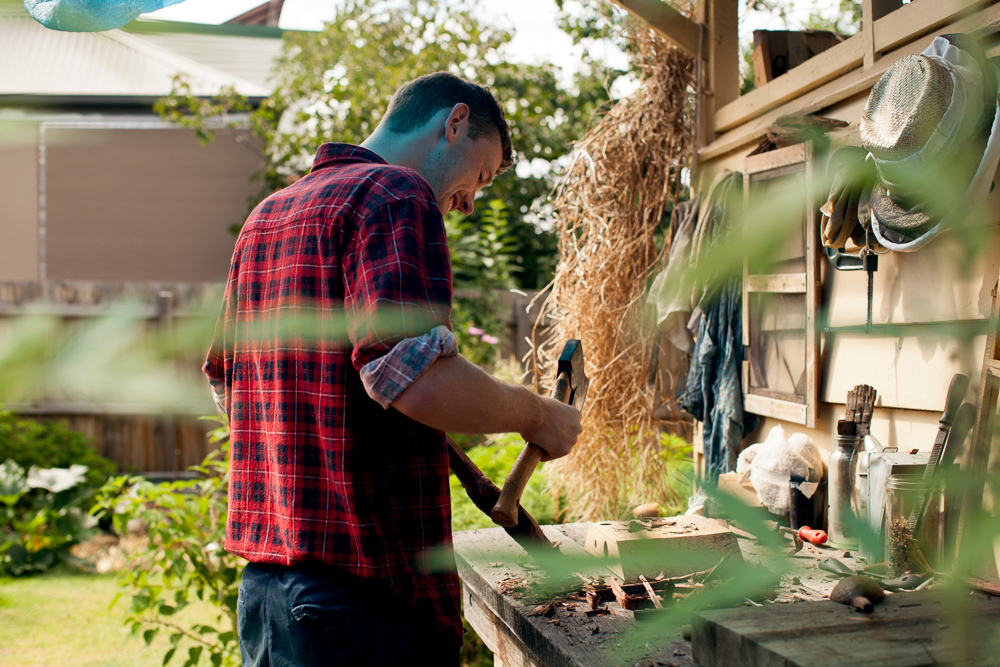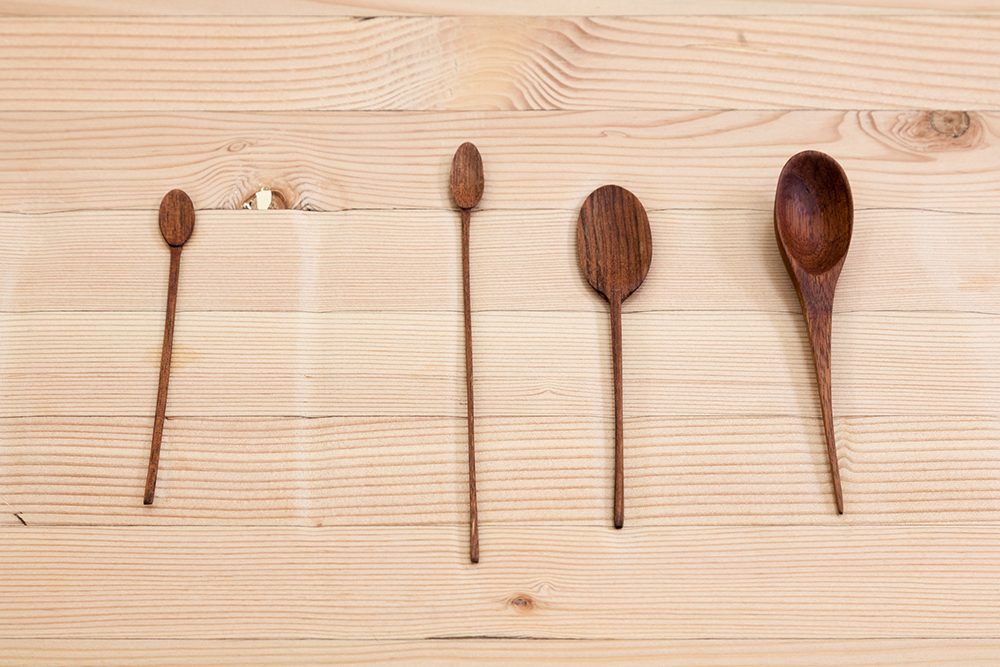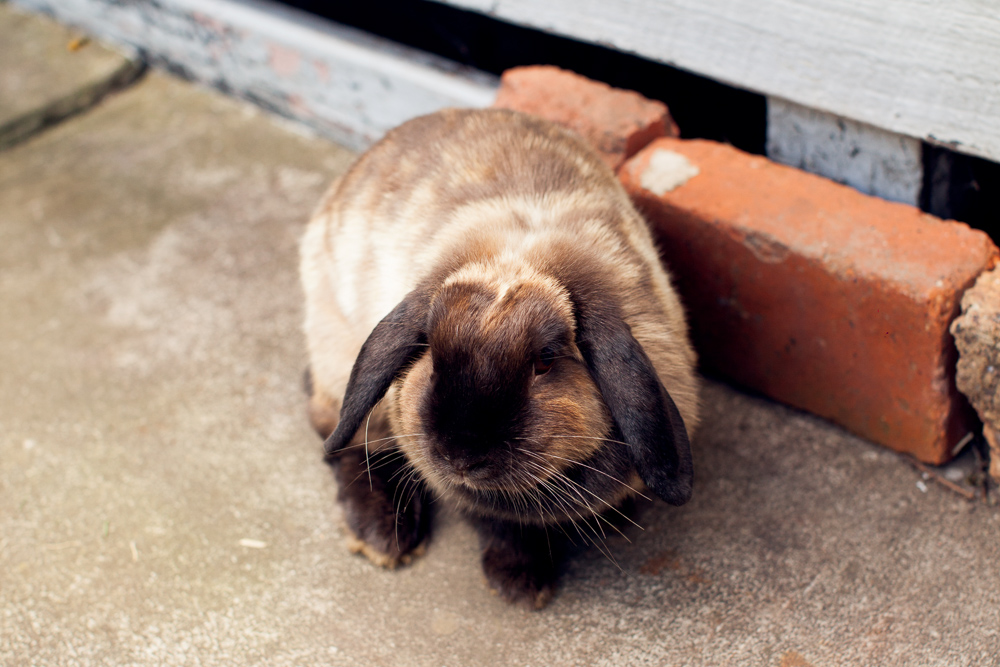Eugene Howard sees potential in fallen wood

Like the smooth cup of a shell, or the curve of a well-worn stone, Eugene Howard senses potential in roughly hewn timber, “there’s a spoon waiting in every piece of wood”. This new perspective quickly reveals hundreds of not-yet-realised spoons in his garden alone. As the world rushes by, Eugene’s practice highlights the timelessness of objects within our daily sphere. Few more so than the humble spoon, having reached its near-essential form an aeon ago. “I’m making objects that have been made for thousands of years, continuing a tradition. That we still need these vessels—that we still need practical things—is very humbling”.
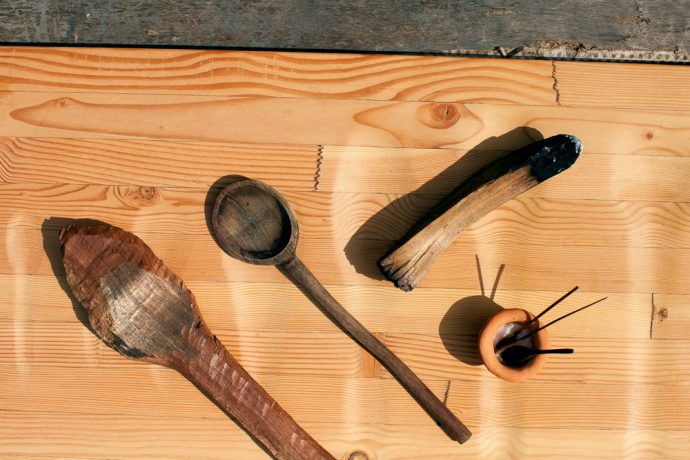
Eugene, who is also a visual artist, began carving spoons under the tuition of a teacher at the Melbourne Rudolf Steiner School. The teacher—who among other things used to make the school’s canoes—taught him to see form and function in what looked like an inanimate piece of fallen wood. One hundred spoons later and each spoon that emerges is completely unique. Eugene doesn’t believe in perfection, “the ideal is the flux”. As he talks he hacks away at a chunk of Australian blackwood with a tiny hatchet. His hands work almost independently, coaxing out a familiar form. “You go with the grain but most of the time, the wood slowly reveals itself. Sometimes the spoons emerge as real ‘spoon’ spoons, others you have to work with much harder. I’m interested in that threshold, the point when you’re suddenly able to identify the thingness of a thing”.
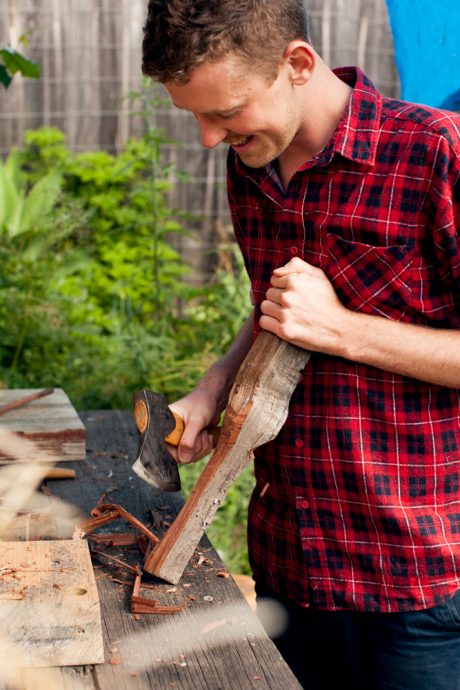
From here, the work becomes increasingly delicate, more a process of contemplation than of perfecting craftsmanship, “a continued learning about the world through the hands”, says Eugene. “The real point is the spending of time. Spending time considering the origin of things and their uses. The focus is not that the item is consumable—it’s that it’s functional”. Each spoon, carved from either found or gifted wood, makes it’s way back into the world as something of use. Eugene enjoys crafting ‘tiny baby spoons’ for his friends’ newborns, minimising wastage by chiseling offcuts from larger objects into mini versions of the original.
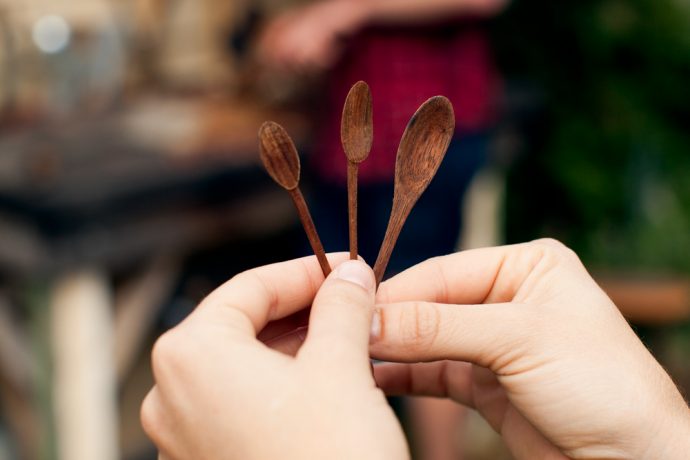
“So far all my spoons have been made out of blackwood, Acacia melanoxylon – a beautiful native tree that grows all over Australia, but particularly in Victoria in the Gippsland region and along the Great Ocean Road. One of the loveliest qualities of Blackwood is that it darkens with age, so if you use the spoon for porridge every morning the wood builds up a beautiful patina and becomes darker and darker. It’s as if the spoon becomes even more of a spoon the older it gets. And the handle becomes waxier and more defined the more it’s used.”
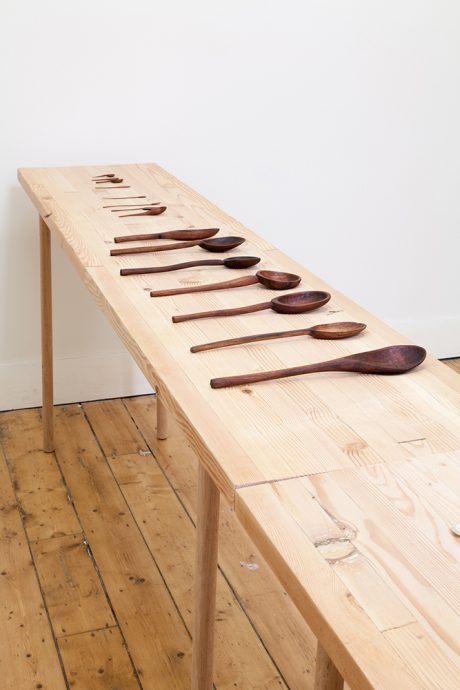
While he works, Eugene’s chooks cluck around his workbench (two hens were the result of an exchange for spoons), helping themselves to his edible garden. A basic tarp provides a little shade while he’s working, but being outdoors is something that informs both his carving and his art, the practice of plein air (translating from French as “in the open air”) is how he describes it, “I love working within the environment to use an element of the landscape as a catalyst”. This connection to nature, and the patience the carving requires is informed by Eugene’s interest in Japanese aesthetics. Eugene references Junichiro Tanizaki and his essay In Praise of Shadows, which explores the “collision between the shadows of traditional Japanese interiors” and the somewhat blinding lights of the modern age. Within the sixteen essays presented by Tanizaki, subtlety and the appreciation of sabi (the imperfect) are explored, and these ideas seem to be naturally constant within Eugene’s work. His most recent spoon, he marvels, has made it’s way across the world to Yamanashi prefecture in Honshu, Japan, to the home of his friend Yuko. Imagining Yuko using her blackwood spoon each day to stir miso brings him much joy.
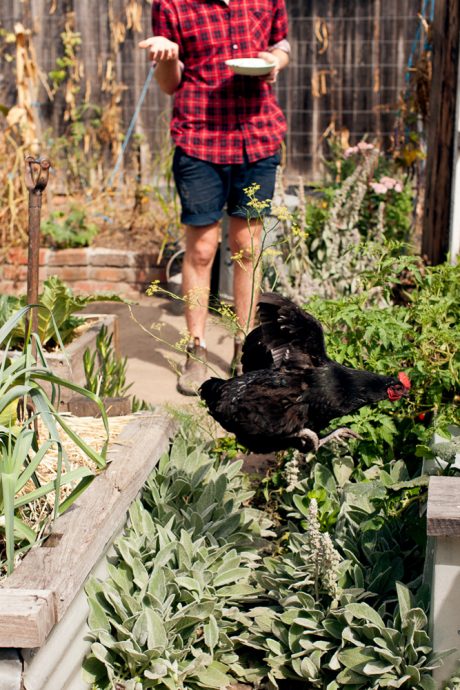
While we are there, Eugene goes into the house and comes out with a smoking piece of Callitris (Cypress pine) he picked up on a recent trip to the Southern Highlands; we all stand around the wafting smoke, and the smell is overwhelmingly beautiful. This piece of timber will be worked with Eugene’s scorp, the Danish woodworking tool he uses to carve out the dish of the spoon. “This timber is full of oils to keep termites away and it’s incredible. If you’re camping and you throw a piece of that wood into the fire the scent is amazing”. A unique connection to Tasmania (his family hails from there) and exposure to its long and controversial environmental history motivates Eugene’s plans for a future project. “I’d like to collect scrap timber that was left in the wake of the tree felling and make functional objects from these splinters. I’ll take these tiny pieces of timber and turn them into something that remembers a forest after its destruction.” Extending Eugene’s earlier work, the project would constitute a critical commentary on the waste and destruction involved with the logging industry. One spoon at a time.
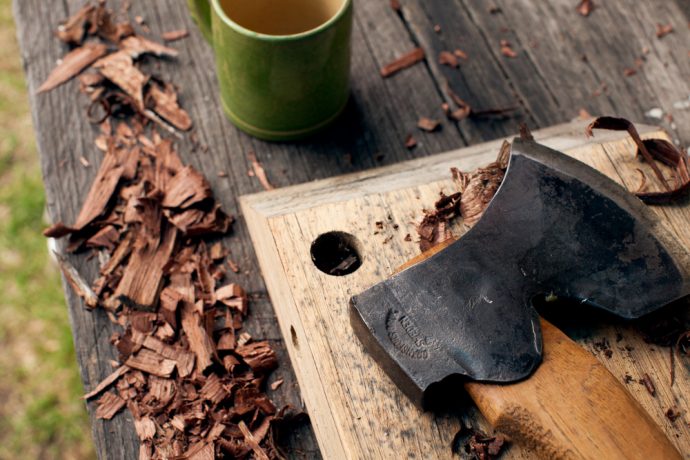
It was calming and easy to watch Eugene work in his garden, a quiet continuation of an ancient tradition. Getting your hands on one of these spoons is no small task, however Bree Claffey, at Mr Kitly does have a couple in her possession after Eugene’s recent exhibition. In the meantime, take a look at what’s in your hands; the little things that line your cupboard drawers. Consider the lineage of the humble spoon.
In addition to Eugene’s carving of wooden spoons he also maintains both painting and video art practices, you can view more of his work here. If you’d like to have one of his wonderful spoons for yourself drop by Mr Kitly on Sydney Road, in Brunswick. A very special thanks to Eugene for having us in his home and allowing us to watch him work. Also, thank you to Tom Ross for documenting the whole thing so beautifully.
